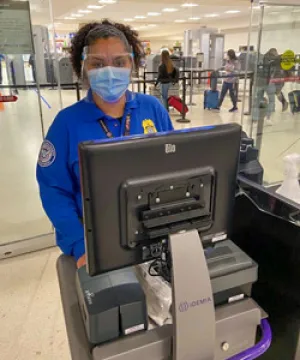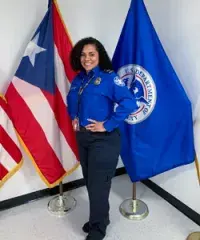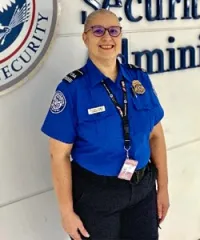
Using technology developed to make document checking more efficient and effective, officers at Luis Munoz Marin International Airport (SJU) in San Juan, Puerto Rico denied entry to three passengers who presented fake IDs at the checkpoint.
When Credential Authentication Technology (CAT) is in use, passengers present only an ID to the TSA travel document checker at the entrance to the security checkpoint. CAT verifies the passenger’s identity while also confirming flight information and vetting status by cross-referencing it against the Secure Flight Database, all without a boarding pass.
CAT alerted Master Training Instructor Paola Miranda of an “ID check” on a passenger. “I reviewed the ID manually and it seemed to be valid. It had the correct security features such as ultraviolet features, micro printing, etc.,” said Miranda. When she reviewed the CAT results, however, she identified inconsistences.
After two additional scans on the only ID the passenger had, Miranda engaged Acting Transportation Security Manager Sandra Mercado, who was also at the podium. Miranda proceeded to process the next two passengers, but was confronted with the same alert for each.
Miranda asked one of the passengers to identify the issuing state of his license. The passenger had to verify his ID before replying, which raised suspicions.
“I saw indicators of unusual behavior displayed in the passengers such as avoiding eye contact,” said Miranda. “They were extremely attentive of what I was doing with the CAT and when asked a few questions they repeated the same response.”
Mercado gave the passengers a list of alternate IDs that might have helped verify their identities, but the passengers couldn’t provide any. “I thought it was an unusual situation that, provided with so many options, none of them could provide one additional form of ID,” said Mercado.
Mercado notified Customs and Border Protection, who detained the individuals, later confirming the documents were fraudulent and the passengers were wanted on drug charges.
To an untrained eye, the face of the licenses seemed legitimate, but further investigation showed one state on the front of the licenses while the barcode and other embedded features showed a different state for each passenger.
“This case demonstrates the value of our new technology and the value of our dedicated staff,” said TSA’s Federal Security Director for Puerto Rico and the U.S. Virgin Islands Mariely Loperena. “Our officers will continue to carry out our security mission using every tool available to them to safeguard our transportation system.”


